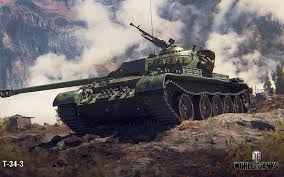In the ever-evolving landscape of online gaming, few titles have managed to carve out a niche as distinct and engaging as World of Tanks. Developed by Wargaming, this free-to-play tank warfare game has transformed the way players perceive strategy, teamwork, and competitive play. Set in a visually stunning world that combines historical authenticity with adrenaline-pumping action, World of Tanks offers a dynamic experience that appeals to both casual players and hardcore enthusiasts alike. This blog post will delve deep into various aspects of the game, exploring its mechanics, community, strategies, and the impact it OKVIP has made within the gaming industry.
The Gameplay Mechanics of World Of Tanks
When entering the world of World of Tanks, players find themselves immersed in a unique blend of real-time strategy and action. The core gameplay revolves around tank battles, where teams compete against each other to achieve victory through destruction or capturing key points on the battlefield.
Understanding Tank Classes
Each tank in World of Tanks falls into one of several classes, which significantly influences gameplay.
Heavy tanks are characterized by their thick armor and firepower. These behemoths often lead assaults and can withstand significant punishment. Their slow speed, however, requires them to move tactically.
Medium tanks offer a balance between firepower and mobility. They excel in flanking maneuvers, allowing players to hit enemies from unexpected angles. Their versatility makes them essential for many strategies.
Light tanks, while possessing less armor and firepower, are incredibly agile. Their primary role is reconnaissance, gathering information about enemy positions and movements. In skilled hands, they can disrupt enemy plans significantly.
Tank destroyers boast high damage output but often come with limited mobility and armor. They are typically used for ambush tactics, capitalizing on their ability to take out heavier targets from a distance.
Finally, artillery units provide long-range support. They might not contribute directly to frontline battles, but their capacity to bombard enemies from afar can change the tide of battle.
The diversity in tank classes leads to a rich strategic environment where players must adapt their tactics based on their team composition and the opposing forces.
Map Awareness and Tactical Positioning
The maps in World of Tanks are intricately designed, featuring various terrains such as urban landscapes, open fields, and mountainous regions. Understanding these maps is crucial for success.
Players must gauge which areas provide cover, set up ambushes, or serve as strategic advantages for flanking. For example, players who utilize hills and bushes effectively can remain undetected while taking shots at unsuspecting enemies.
Moreover, map awareness extends beyond individual position; it involves understanding the flow of battle. Being aware of where teammates are stationed, predicting enemy movements, and adjusting one’s tactics accordingly can make a substantial difference in victory or defeat.
Teamwork and Communication
While individual skill is vital, World of Tanks is fundamentally a team-based game. Collaboration and communication among players can enhance performance dramatically.
Utilizing voice chat or text communication to share information about enemy locations or coordinating attacks can create a well-oiled machine on the battlefield. Players who form squads or platoons often see improved synergy, leading to better tactical execution.
Additionally, fostering a positive team environment contributes to an enjoyable gaming experience. Celebrating victories together or learning from defeats builds camaraderie and motivates players to continuously improve.
